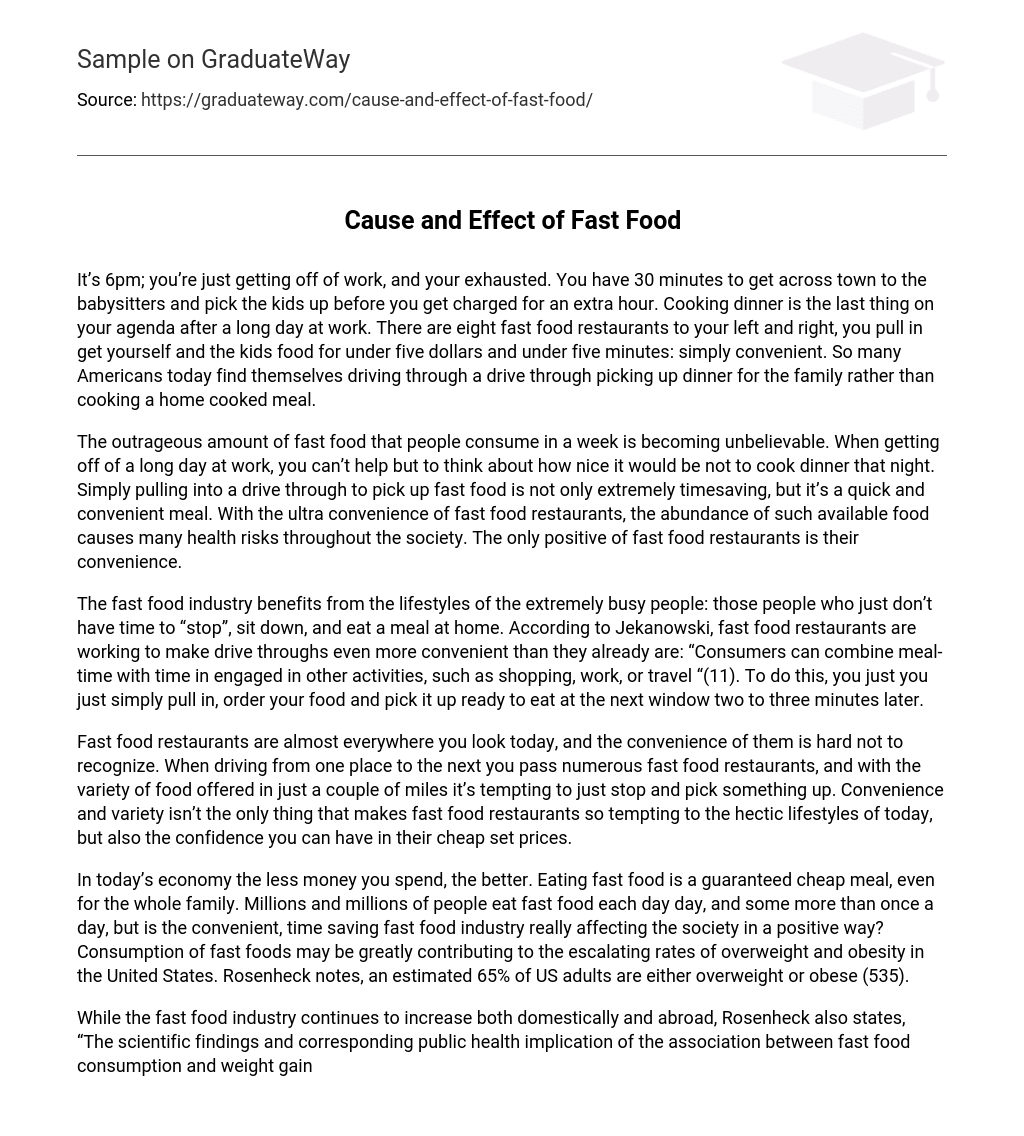After a tiring day at work, feeling exhausted and with only 30 minutes left before incurring an additional hour fee at the babysitters, you have to collect your children. As preparing dinner is not a priority, you decide to take advantage of the convenient location of eight fast food restaurants on both sides of the road. You opt for one of them where you can quickly buy affordable meals for yourself and the kids that take less than five minutes to get – it’s a straightforward solution. Nowadays, instead of cooking at home, many Americans prefer drive-throughs for family dinners.
The consumption of fast food in a week is reaching an astonishing level, as people find the idea of not having to cook dinner after a long day at work appealing. Opting for a drive-through meal is not only efficient but also convenient. However, the wide range of fast food choices comes with numerous health risks. The convenience factor remains the only advantage of fast food restaurants.
The fast food industry caters to the busy individuals who don’t have time for homemade meals. According to Jekanowski, fast food establishments prioritize maximizing drive-through convenience, allowing consumers to multitask while eating, such as shopping, working, or traveling (11). The process is straightforward: drive up, place your order, and receive your prepared meal within two to three minutes at the next window.
Fast food restaurants are widely available and provide convenient access to quick meals for people on the go. The nearby availability of a wide range of food options can be enticing for individuals with fast-paced lifestyles. These establishments cater to such lifestyles by offering both convenience and variety in their menu choices. Moreover, their affordability further contributes to their overall appeal.
Opting for inexpensive meal choices like fast food can be advantageous in the current economy. The fast food sector caters to a substantial number of individuals daily, including those who consume it multiple times per day. Nonetheless, it is crucial to contemplate whether the convenience and time-saving benefits of fast food have a favorable impact on society. The consumption of fast foods is believed to greatly contribute to escalating rates of obesity and overweight individuals in the United States. According to Rosenheck (535), approximately 65% of adults in the US are classified as either overweight or obese.
Despite the global expansion of the fast food industry, Rosenheck (535) highlights the importance of the link between consuming fast food and gaining weight, stating that this connection has both scientific and public health implications. The quick delivery of super-sized fries in less than thirty seconds is believed to greatly contribute to weight gain among Americans today. Stender further supports this argument by pointing out that portion sizes at fast food establishments have increased by 2-5 times over the past five decades, and we are aware that larger portions result in higher consumption rates (source: Fast Food).
Fast food establishments offer convenient and affordable food choices that are hard to resist, leading many Americans to become overweight. When ordering a meal, the temptation of upgrading to a larger portion for just one dollar more is often too good to pass up. Stender points out that fast food generally contains high levels of energy and when combined with large portion sizes, it results in consuming excessive calories (Fast Food). Additionally, the fast service provided at these restaurants also contributes to weight gain and an unhealthy lifestyle.
Fast food is more convenient than cooking at home, but this convenience is making society lazy. When families rely on fast food due to their busy schedules, it perpetuates a harmful cycle. If children grow up eating mostly fast food, they are likely to continue this pattern in the future. This cycle leads to an increase in obesity cases. While fast food may seem like a convenient luxury, it actually means ordering health problems instead of just supersized fries.
Works Cited
- Jekanowsk, Mark. “Causes and Consequences of Fast Food Sales Growth. ” USDA, 1999. Web. 2 Nov. 2010
- Rosenheck, R. “Fast Food Consumption and Increased Calorie Intake. ” ObesityReviews 9 (2008): 535. EBSCO HOST. Web. 2 Nov. 2010.
- Stender, S and J Dyerberg. “Fast Food: Unfriendly and Unhealthy. ” Journal of Obesity





